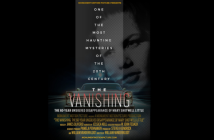By: Jonathan Harb, CEO and Executive Producer at The Whiskytree Southern Corporation
Now that my company and family are a little more settled, I want to provide you with insight into my visual effects company, Whiskytree, and make clear what stands out about Georgia as a destination for my business. With Georgia’s incentive program recently under review, I offer my support for the program and highlight what made it attractive in the first place. There is also a substantial opportunity in stand-alone post-production incentive that can benefit everyone even more.
I founded Whiskytree in May 2007 in San Rafael, California. In the 17 years since, we’ve handled visual effects for scores of major blockbuster films, episodic television shows, broadcast commercials, AR/VR projects, games, and special venue projects for major global brands. We now have two locations, including our new addition in Alpharetta, and are currently expanding, with an emphasis on adding employees in the state of Georgia.
Some of Whiskytree’s greatest hits include: Andor, The Avengers, Babylon, The Big Short, Black Panther: Wakanda Forever, Captain America: The First Avenger, Elysium (our work was presented for Academy Award consideration), Foundation, The Hunger Games, Iron Man, Mother, Obi-Wan Kenobi, Rogue One: A Star Wars Story, Star Wars: The Last Jedi, Terminator Salvation, Thor: Ragnarok and many, many more. You can see our work right now on Apple TV+ in Tom Hanks’ and Steven Spielberg’s Masters of the Air. Several of these titles were filmed locally, and we’re expecting more local projects in the future.
The modern reality of feature film and episodic work is that these projects are only made possible with regional incentives built into their budgets. As such, the vast majority of modern visual effects (VFX) work happens outside the United States, where the world’s most generous incentives are preeminent. Some of that work is going overseas, but a lot is heading north across the border. Vancouver spent decades cementing its reputation as an entertainment industry-friendly city, and Montreal has been making a concerted effort to be known as a hub for post-production. From 2014 to 2019, the VFX services there alone almost quintupled, leading to over 6,000 high paying jobs.
To be clear, Whiskytree has been successful in California, and as remarkable as it sounds, we have never worked on an incentivized production, even as we’ve seen our clients benefit from 25-55% incentives. Yet, we’ve still thrived, and are sought after for the quality of our work, and our reliability in delivering on time, and on budget. Simply put, we are very good at what we do. That being said, after witnessing company after company find growth and success in incentivized regions, we realized that future growth for our business meant changing our approach.
I’ve been in this industry for decades now, and seen it change dramatically. I grew up in Boone, North Carolina, Rock Hill, South Carolina, Blacksburg, Virginia, and Knoxville, Tennessee. In spring of 1995, as a senior in Industrial Design at North Carolina State University, I met Lorne Peterson and Charlie Bailey, two model-makers from Industrial Light & Magic (ILM), the company that George Lucas founded to create Star Wars. Lorne and Charlie helped make the Death Star, the Millennium Falcon, and some of the most iconic creations ever seen in hundreds of films in their decades-long careers.
Following their advice, I relentlessly created a portfolio and applied for a role as a production assistant in the art department at ILM. I graduated from NC State in December of ’95, and drove into San Rafael, CA, on January 1, 1996, for a fulltime job with benefits, making $9.50 per hour (artfully negotiated up from $9.00/hr, mind you). I started my career in VFX the next day.
In the next 11+ years, I story-boarded sequences in the special editions of Star Wars, created concepts in Men in Black for Steven Spielberg, designed concepts and created environments for the Pod Race in the Star Wars prequels, created matte paintings for Tim Burton’s Sleepy Hollow, made the Isla de Muerta for Gore Verbinski’s Pirates of the Caribbean: Curse of the Black Pearl, helped invent techniques for building cloud environments in PJ Hogan’s Peter Pan, created skies, hurricanes, and environments for The Perfect Storm, and even worked on the movie poster.
As I rose through the ranks, I managed and supervised 50+ Digital Matte and Rebel Mac artists through Star Wars: Episode III, guided, supervised, and contributed hands-on work to the team that built the scenes at the end of Roland Emmerich’s The Day After Tomorrow, presented possibilities for photorealistic environments to James Cameron for his forthcoming Avatar, created Shanghai skylines in Tom Cruise’s Mission Impossible: III, supervised work on Michael Bay’s Transformers II , won the first two VES awards for matte painting and environment creation, represented ILM at computer graphics events around the world, and most importantly, met and made connections from all levels of the Lucasfilm companies, many of who have now migrated world-wide, and are still part of my network of friends and colleagues today.
I became interested in all aspects of business at ILM, which was the principal reason I elected to found Whiskytree. Several of my ILM colleagues joined me, and within a few months we landed Adam Sandler’s Bedtime Stories. Our first major VFX break, however, was Marvel Studios’ Thor. Whiskytree was one of three primary vendors on the film, and we were entrusted to design and build Asgard, Thor’s mythical home realm, and the first time that a Marvel movie left planet earth. Along the way, the Academy of Motion Picture Arts and Sciences invited me into its membership, and since 2017 I have been a voting member of the Visual Effects branch of the Academy.
I’ve been a part of the post-production and VFX industry for long enough to understand the current trends, and for the future of my company, I knew we needed to expand into an incentivized area.
It came down to two locations: Georgia or New York. Ultimately, we went with Georgia for the following reasons: 1) Georgia’s competitive incentives that can apply to post-production, 2) a high quality of life for my family and Whiskytree personnel, 3) Georgia’s well-known business-friendly environment, and 4) I have wanted to return to the South for years.
With the Georgia incentive program recently under consideration, I want to highlight two points:
- Simplicity and ease of access to incentives are nearly as important to productions as the overall amount of incentives.
- A stand-alone post-production incentive is extremely worthy of consideration, and will give rise to hundreds, if not thousands of high-quality, well-paying jobs, that are less likely to be temporary, throughout the state.
There is a huge amount of production work occurring in the state, but only a handful of options to keep that work local for post-production. This presents a massive opportunity to grow this side of the business, bring in high-paying jobs, and prevent the work from being shipped outside of America. This may well also result in the added benefit of bringing even more production work to Georgia.
Meanwhile, I am happy to report that The Whiskytree Southern Corporation is running at full stride in Alpharetta, performing work on two feature film projects and special venue work that will make global headlines in the coming months. We are proud to have already created dozens of Georgia jobs, and look forward to continuing our growth in the Peach State.
This article appeared in the 2025 edition of the Creative Economy Journal. See more from the Journal here.




